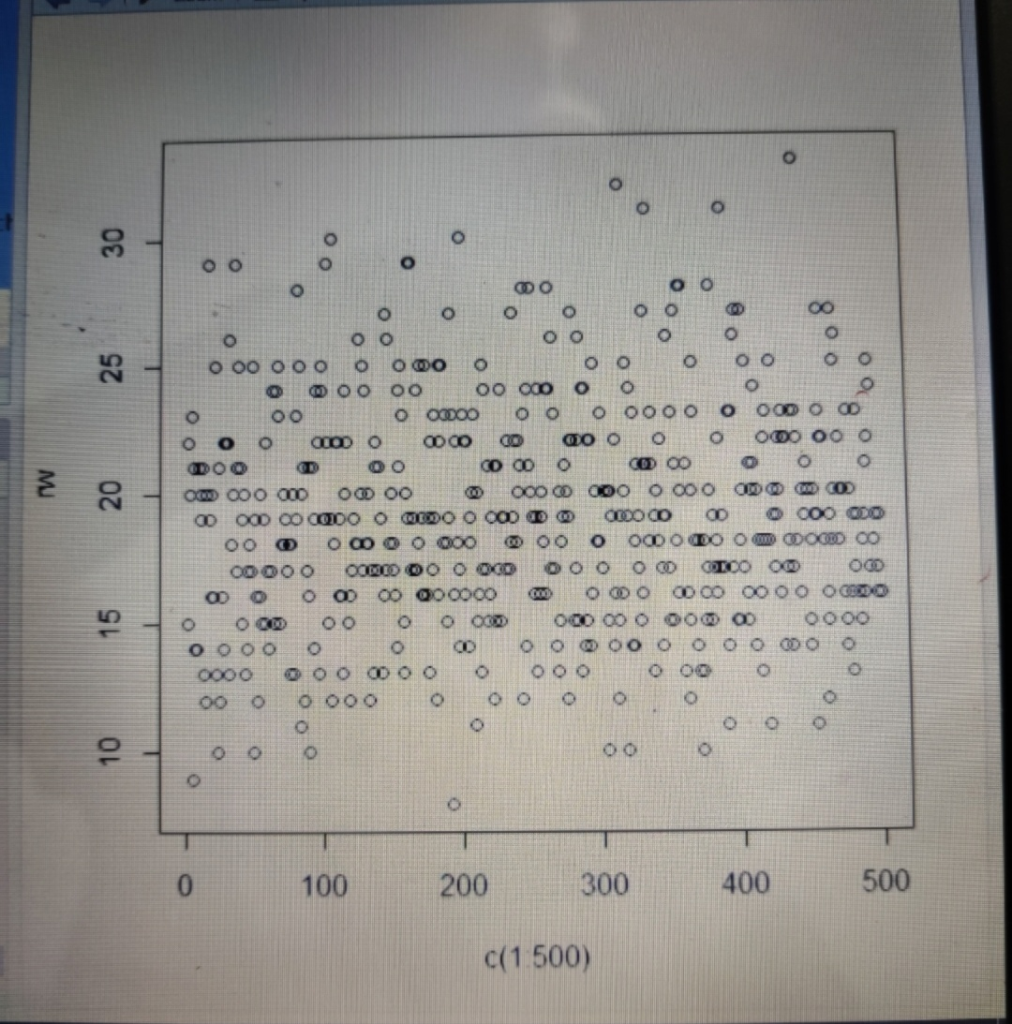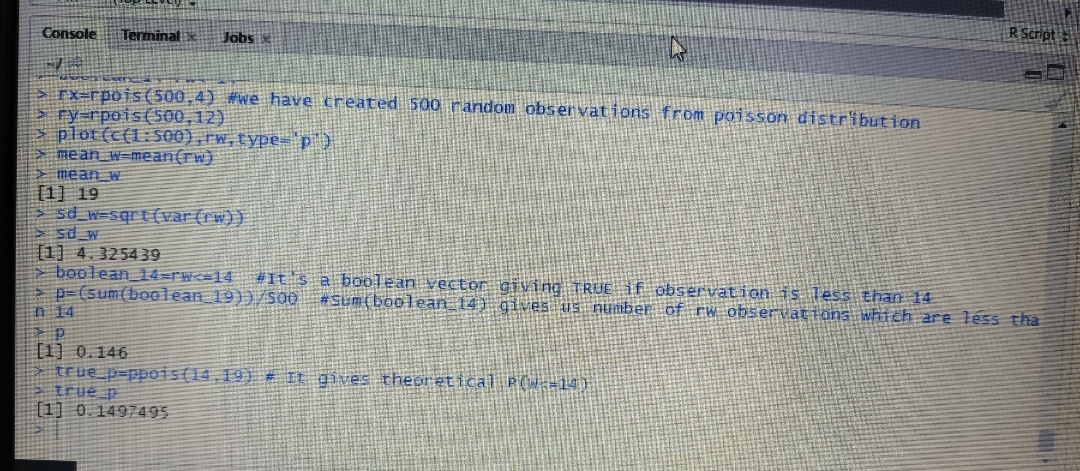Question
In: Math
Let X ∼ Pois(4), Y ∼ Pois(12), U ∼ Pois(3) be independent random variables. a) What...
Let X ∼ Pois(4), Y ∼ Pois(12), U ∼ Pois(3) be independent random variables.
-
a) What is the exact sampling distribution of W = X + Y + U?
-
b) Use R to simulate the sampling distribution of W and plot your results. Check that the simulated mean and standard error are close to the theoretical mean and standard error.
-
c) Use the simulated sampling distribution to estimate P(W ≤ 14) and then check your estimate with an exact calculation.
Solutions
Expert Solution
 please
have a look at the R code
please
have a look at the R code
rx=rpois(500,4) #We have created 500 random observations from
poisson distribution
ry=rpois(500,12)
ru=rpois(500,3)
rw=rx+ry+ru
plot(c(1:500),rw,type='p')
mean_w=mean(rw)
mean_w
sd_w=sqrt(var(rw))
sd_w
boolean_14=rw<=14 #It's a boolean vector giving TRUE if
observation is less than 14
p=(sum(boolean_19))/500 #Sum(boolean_14) gives us number of rw
observations which are less than 14
p
true_p=ppois(14,19) # It gives theoretical P(W<=14)
true_p
"Now have a look at the output"

 simulated
mean is coming out to be theoretical mean and simulated standard
devaition (4.325) is very close to actual sd ( root(19)=4.3589).
The simulated probabolity (0.146) is very close to actual
probability (0.1497)
simulated
mean is coming out to be theoretical mean and simulated standard
devaition (4.325) is very close to actual sd ( root(19)=4.3589).
The simulated probabolity (0.146) is very close to actual
probability (0.1497)
Related Solutions
1. Let X and Y be independent U[0, 1] random variables, so that the point (X,...
Let X and Y be two independent random variables such that X + Y has the...
Let X and Y be independent positive random variables. Let Z=X/Y. In what follows, all occurrences...
Let X and Y be two independent random variables. X is a binomial (25,0.4) and Y...
Let X, Y, and Z independent random variables with variance 4 and mean 1. Find the...
Let X, Y be independent exponential random variables with mean one. Show that X/(X + Y...
Let X and Y be independent Gaussian(0,1) random variables. Define the random variables R and Θ,...
1. Let X and Y be independent random variables with μX= 5, σX= 4, μY= 2,...
Let X, Y be independent random variables with X ∼ Uniform([1, 5]) and Y ∼ Uniform([2,...
Let X and Y be two independent random variables, and g : R2 --> R an...
- 5) The demand for a good varies A) directly with the prices of substitutes and also...
- Accounting for foreign currency transactions MyBeauty Ltd is an Australian company which specialises in manufacturing...
- The general ledger of the Karlin Company, a consulting company, at January 1, 2021, contained the...
- In Linux Professional: PE15 (CH) 1 – why is the max RAM for a 32-bit OS...
- Use the following words to script that mirrors a conversation that you might have with a...
- I need C++ code Given the complete main() function, partial playlist class header playlist.h, and playlist.cpp,...
- "Elizabeth Egbert owns a galvanizing plant. Customers bring in their fabricated steel products (like light poles,...
 milcah answered 1 month ago
milcah answered 1 month ago